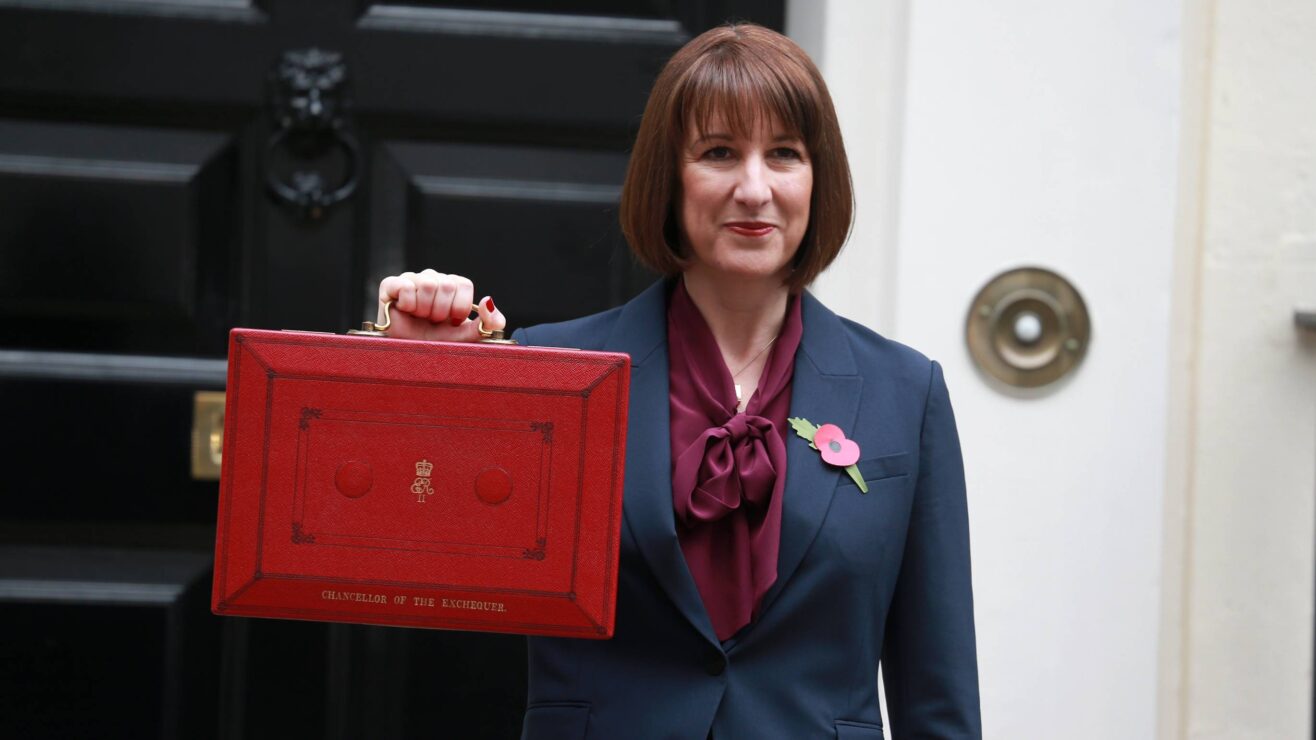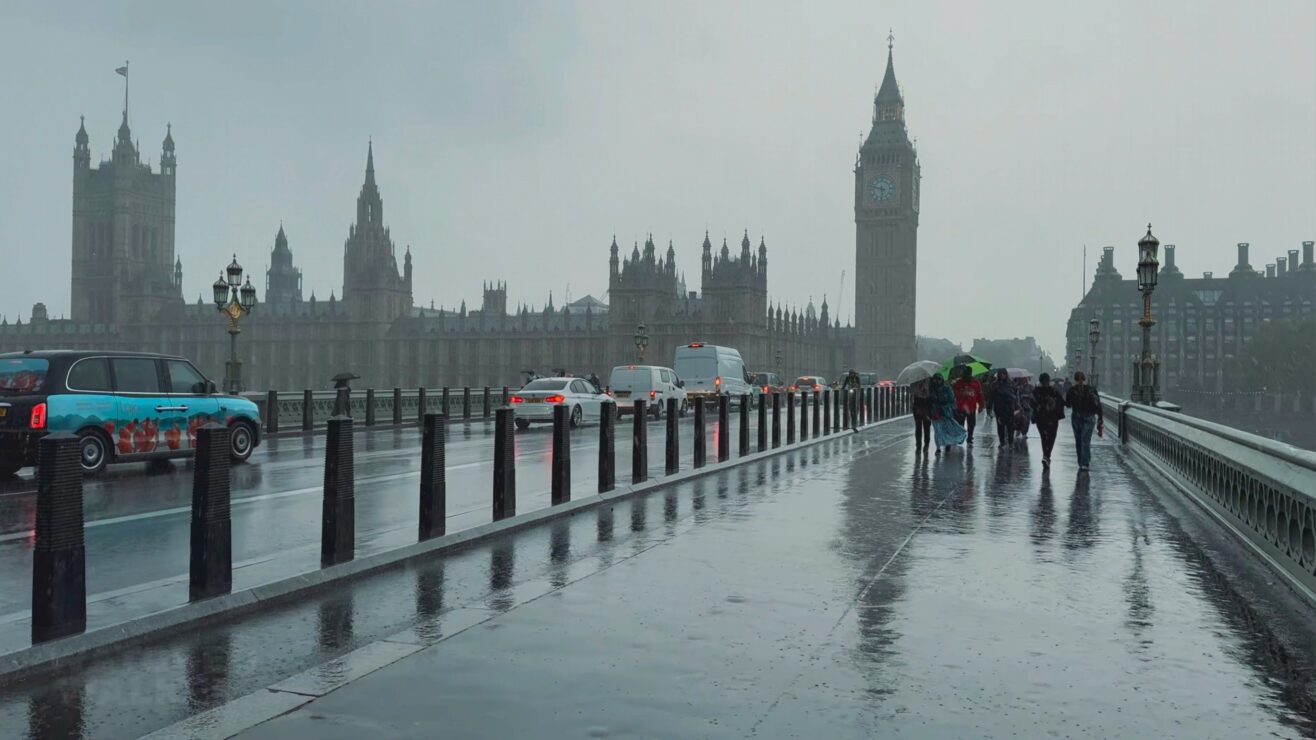24 years into the century and we haven’t quite decided what we’re calling the 2000s. Oughts? Noughties? I’m not keen on either, so let’s stick to 00s.
The first decade of the century, whatever we want to call it, was dominated by the Labour Party. Such domination and electoral majorities produced social, political and cultural change. This means that New Labour ideology has shaped (in many different ways, positively, negatively and all points in between) perspectives of those now in their 30s, 40s and 50s – full disclosure this includes me and many working in HE today.
Following the 1997 election win, the New Labour machine governed for the whole decade with the only change coming in leadership in 2007 when Chancellor Gordon Brown finally got his chance to be PM and take over from Tony Blair – only to be hit with a global financial crisis as deep and serious as the 1930s.
Dearing and beyond
In terms of higher education and universities, the trickiest policy for New Labour was balancing increased growth (the famous 50 per cent target of young people attending university which was seen as a natural continuation of improving standards in schools) and the political and economic conundrum of who was to pay for that growth – the individual, the state or a combination of the two. The Dearing Report in 1997 recommended that students should contribute financially towards their education, as well as the state and employers. The first steps towards the tuition and loan system we have today was a means-tested approach with the parents of the top third of earners paying £1,000 per year and this incrementally reducing to £500 and nothing, starting from 1999.
In a not dissimilar position to 2024, vice-chancellors lobbied for more funding, threatening the risk of UK institutions slipping down global league tables and the post-Dearing settlement quickly began to fracture as top up fees rose and eventually gave way for full tuition fees. This was a controversial internal Labour party issue as well as societal. The manifesto texts of 2001 and 2005 show us the political rough and tumble of fees policy – an issue that very nearly fractured the Labour party and government.
Blair and Brown clashed on the details of more funding and contributions made by students, but ultimately the system of student contribution was firmly established: in 2004 it was decided that fees would increase in 2006 to £3,000 and the introduction of income-contingent loans; fees increased again in 2012 to £9,000 and to £9,250 in 2018 under the Conservative-Liberal Democrat coalition government and Conservatives respectively. Growth and fair access was still the political consensus as it had been since the sixties, but who would pay and how was a key public debate of the decade. But… the century began with a bug.
In our decade by decade analysis of manifesto texts of the twentieth century, the coming technological revolution was linked heavily to research, teaching and national responsibility for universities to play a part in the transition to a new technological information society and knowledge economy. In 2000, the revolution had arrived and the world held its breath to see if the tick over from 31 December 1999 to 1 January 2000 would send technological devices into meltdown, unable to cope with a date beginning with 20 rather than 19.
In the 00s, technologically we moved beyond websites and PCs. The Apple Ipod put our record collections in our pockets and then morphed into a phone with a camera. The decade also saw Facebook (2004), YouTube (2005) and Twitter (2006) all founded. These were all heralded at the time as democratising and connecting forces as political regimes were challenged and we delighted in sharing pictures of our dinners. The bug of 2000 should have given us more of an insight into the infrastructural reliance on technology that we face today and how to overcome it.
The millennium bug or the year 2000 (Y2K) problem was a concern that hardware and software had been coded with only two digits rather than four – so some systems could think that we had moved not into the brave new world of the 2000s but 1900. The threat of the millennium bug was in the home – video recorders, answer phones and fax machines as well as global and national infrastructure – a sign that technology was permeating our everyday lives. The threat was very real. So much so that the cultural bellwether, The Simpsons, brilliantly satirised the social and technological threat of the potential crisis. Of course, we’re now living through the potential wonders and blunders of AI.
We can look back mockingly at the turn of the century’s panic about obsolete home electronics but many commentators have shown how lots of money and infrastructure work was needed to literally keep the lights on. The Labour government showed it was serious about the threat that needed to be tackled with a dedicated government agency, Action 2000, to support businesses to prepare for 31 January 1999. Action 2000’s public information film stated that “business is usually about competition, but right now, it’s about collaboration.”
Bridging competition and collaboration was also the political zeitgeist of the early 00s as “third way” politics sought to bridge the gap between capital and society. Blair said in 1999 that the 21st century would not be a battle between capitalism and socialism but between progress and conservatism and that conservativism would “keep out bright inner city kids from our best universities.” The political faces of third way centrism, Bill Clinton and Tony Blair were both in power as Big Ben chimed in the year 2000, and the great and the good celebrated the new century in the Millennium Dome (remember that? It’s the O2 now kids).
There were just two general elections in the UK in the 2010s. In 2001, Labour and Tony Blair remained in power following the 1997 landslide victory. The 2001 win resulted in a reduced majority, down from 1997’s 179 seat advantage to 167. The second election of the decade in May 2005 was another Labour victory and the third for Blair. In 2005, Labour’s majority decreased to 66 as opposition to the US-led coalition invasion of Iraq in 2003 was cited as a factor in the downturn of support from the British electorate, but a majority it was nonetheless.
2001 General Election
As our longer arc of analysis of manifesto texts has shown, references to higher education and universities increased in number from 1945 onwards. As well as the increase in number, the nature of the references widened beyond teaching and research into areas such as health, youth, devolution of power to the regions and reform of public services. Such broadening of roles and responsibility can be seen where manifesto texts included the sector in introductions or conclusions. We took this as a proxy of importance and responsibility as references were less confined to research and/or education.
The 2001 Labour text is a prime example of this. Titled “Ambitions for Britain,” Blair’s manifesto for a second term in office describes building upon achievements from 1997 with ten goals for 2010. These goals which included long-term economic stability and rising living standards and health – all traditional pledges. Also new political rhetoric made the list – British ideas leading a reformed and enlarged Europe and global poverty and climate change tackled. Third in the list of pledges was “Expanded higher education as we raise standards in secondary schools.”
The higher education sector was heavily involved in a nation building vision of the 21st century by an emboldened and confident Labour Party with their 179 seat majority. The 2001 Labour manifesto had 21 references to universities and higher education. The Conservatives had 8 and the Liberal Democrats 13 and only the 2010s had more references to the sector in manifesto texts from 1945 to 2019 (in 2010 Conservatives had 14, Labour 31 and Liberal Democrats 12).
Under the heading of education reform, Labour’s manifesto text included the ten year goal of 50 per cent of young people entering higher education which had first featured in the 1999 Labour Party Conference. Universities were called on to contribute to the productivity challenge in exchange for increased investment in skills and innovation. Regional Development Agencies would also contribute and develop local contexts providing links between universities, industry and schools. Health and youth were also linked to higher education with the promise of a university of the NHS.
We will set up a University of the NHS to guarantee to staff at all levels opportunities for training and career development. Healthcare assistants, porters, cooks and cleaners will be offered an individual learning account worth £300 a year to develop their careers. We will examine the potential for sabbaticals to help GPs, consultant nurses and consultants keep their skills up to date.
The 1997 policy to introduce a University for Industry was under way as Learn Direct and the 2001 text reported that four years later there were 400 skills courses available. Higher education featured alongside and played a part in investment in education from nursery to adult learning, tackling youth unemployment, a New Deal with modern apprenticeships, community sports facilities and cleaning up the environment with support for green technologies and global action to tackle climate change as aspects of improving the opportunities of the young.
A dedicated section on the sector: “Higher education – a world leader” in the 2001 Labour manifesto opened with numbers to say that higher education brings on average 20 per cent higher earnings and a 50 per cent lower chance of unemployment with a re-emphasis on growth but not to the detriment of standards. This quote encompasses a centrism, balance and third way which has been both celebrated and derided and we might argue in 2024 is back. For some, such an approach is trying to please everyone but pleases no one and for others it’s a game of consensus and collaboration and ultimately democratic.
The infamous 50 per cent target
Higher education in the 00s became a wedge issue around fees. In 2024, the 2001 manifesto pledge of 50 per cent of young people taking advantage of higher education by New Labour is now being used to differentiate Labour and Conservatives and the growth blamed for “rip off” and “Mickey Mouse” degrees. Labour’s manifesto in 2001 said:
It is time for an historic commitment to open higher education to half of all young people before they are 30, combined with increased investment to maintain academic standards.
The section dedicated to higher education states that the Labour Party in 1997 inherited a system that was capped, and expansion was ongoing towards the 50 per cent target. On funding they stated:
We will not introduce ‘top-up’ fees and have legislated to prevent them. Since 1997 we have increased university funding by more than a billion pounds a year over the Parliament – and invested considerably more in research. Our new system of university finance ensures that 50 per cent of students pay no tuition fees at all, that no parents pay more than under the old system, and that students pay back loans progressively when they are earning. We will ensure that the funding system continues to promote access and excellence.
“Excellence” features in three different contexts, a word that features heavily in education policy from that point forward and of course in research and teaching frameworks:
- An Excellence Challenge programme with summer schools, master classes and mentoring support for students from disadvantaged areas with increased funding to achieve increased participation
- A funding system that promotes ‘access and excellence’
- A strengthening of research and teaching excellence to compete internationally to ensure “world-leading” universities
The Liberal Democrats in 2001 kept the university and higher education in its self-contained lane of education (and employment) from a structural perspective within the manifesto. They promised to abolish tuition fees whilst continuing with expansion of higher education in line with much of the twentieth century discourse and that of Labour in 2001.
As well as abolishing fees of any type, the Liberal Democrats in 2001 promised to reform student maintenance, improve access for the under-represented and part-time and mature students. The latter would be improved by lifelong learning policies such as giving every adult public funded tuition to meet the changing needs of the work force and to provide loans and maintenance for all, with individual Learning Accounts and to simplify funding and qualification systems.
Further, they wanted to tackle gender pay gaps within universities and other pay inequalities for part-time and casual staff as well as promising increased salaries to attract and retain high quality recruits. Getting into further policy detail, the Liberal Democrats promised to oppose any reduction in the teaching unit of resource and to increase it, should they have gained power.
Despite 2001 being a spike in mentions for higher education and universities across the three major parties, the Conservatives under the leadership of William Hague mentioned the sector sparingly in 2001. In a section strangely entitled, “Through our Lives” with a subheading of “Raising a Family” – presumably talking directly to parents rather than students, the Conservative Party put forward a policy of having endowed universities with less onerous student loan repayments.
Within the same section with a sub-heading of “Freeing our universities” the Conservatives bemoan the fact that British universities were the best in the world but are no longer, due to excessive interference by politicians and lack of funding. To facilitate universities’ return to the global stage, the Conservatives promised to allow universities to shape their own character and specialisms through their own independence by creating a permanent endowment to fund this freedom – a proposal that vice chancellors now could only dream of.
2005 and a third Labour term
The tuition fee debate divided the Labour party and in 2004 a vote was passed by the slimmest of margins to increase tuition fees in what became the Higher Education Act 2004. The small margin was achieved despite holding a second term 167 seat majority. The slenderest of margins in the vote showed the strength of feeling in the Labour Party. Still described as “top up fees” as a contribution to one’s education, this contribution it was agreed would increase to a maximum of £3000 per year in 2006. Tuition fees and the Iraq war were later considered the biggest challenges of this period.
Possibly anticipating a reduced majority in the 2005 General Election the Labour party got through the Higher Education Act 2004 but with concessions forced by rebellion from across the party. The concessions achieved were establishing a Director of Fair Access to ensure the least well off in society were not put off higher education because of cost, and a student complaints system was introduced with a new Independent Adjudicator for Higher Education. The National Student Survey (NSS) was also introduced in 2005, heralding for many an era of consumerisation and students being positioned as customers rather than learners.
Despite the political spotlight and criticism of increased fees being put into legislation in 2004, the general election of 2005 saw Tony Blair make history as the only Labour leader to achieve three terms in power. Blair lasted until 2007 when Gordon Brown’s long wait to become leader was finally realised. The New Labour ethos continued into the 2005 election manifesto. The very well settled sitting government continued with third way approaches to the economy, stating that every school would offer enterprise education and every college and university should be twinned with a business champion.
“Education, education, education” was still on the agenda and the 2005 Labour manifesto introduction promised to widen access to university and training. A section dedicated to higher education elaborated further, promising both quality and quantity and to improve the transition from school to university. The manifesto maintained and re-iterated the target of 50 per cent of young people taking advantage of higher education and this included two-year vocational foundation degrees playing a key part of the growth target. Vocational education and training remained, as it had since 1945 remained a key issue for would be governments. Labour in 2005 wanted to raise quality and status of vocational routes with academic tracks being described as too narrow – here we see the echoes of this sentiment in the 2020s with a call for a more joined up tertiary system. There were also promises to increase PhD opportunities.
As the 2000s progressed tuition fees became more of a dividing issue, Labour’s 2005 manifesto stated:
Universities are critical to Britain’s future prosperity. We need a bigger, better higher education system. We are investing £1 billion more in the science base, and increasing public spending on higher education by 34 per cent in real terms. But graduates and employers must also play their part. Our funding reforms will generate £1 billion of extra funds by 2010; the abolition of up-front fees and the creation of grants will help poorer students. A quarter of the income from the new student finance system will go to bursaries for students from poorer families. The maximum annual fee paid by students will not rise above £3,000 (uprated annually for inflation) during the next Parliament.
Labour was bullish and emboldened to push on with tuition fee rises, showing a confidence of victory, a confidence we are unlikely to see in 2024. 2029 with a clear majority might see more bold moves towards reform.
Leader of the opposition Michael Howard used universities in his personal opening to the 2005 Conservative manifesto. The opening is titled “The British Dream” and uses universities as a source of global respect and in his own personal story of being the first in his family to go to university. This personal message is followed up in the manifesto, twice stating that there would be no tuition fees had the Conservatives gained power and that universities would be funded for excellence and financial independence. The Conservative policy in 2005 was a polar opposite to Labour:
We will restore real choice in higher education by scrapping fees and abolishing Labour’s admissions regulator. University funding will depend on attracting new students and so excellence will be encouraged. We will also help universities move towards greater financial independence by building up their individual endowments.
The 2005 Liberal Democrat manifesto text has a stylistic change in that much of the document is “written” by Liberal Democrat spokespeople for ministerial roles – separate sections each – all signed off with real signatures. Phil Willis, the “Liberal Democrat Shadow Secretary of State for Education” called upon his own experience as a head teacher to articulate his dismay at education being used as a political football and called for equality of prestige between academic routes and vocational training and high-quality apprenticeships. Steve Webb, “Liberal Democrat Shadow Secretary of State for Work and Pensions” states his credentials for the role having studied mistakes of government in his research role at Bath University. This style appears to be a first in manifesto text genre; a creative innovation that hasn’t endured beyond a personal message from party leaders.
The Liberal Democrats also followed the lead of the Conservatives to call for tuition fees and loans to be scrapped. The debate around tuition fees was clearly divisive socially and politically. New Labour had the political capital and confidence to push through changes which we are living through today. Were the Liberal Democrats and the Conservatives serious about reversing the incremental policy of introducing tuition fees in England? Or were they trying to land a political blow to the New Labour election machine. Whatever the answer, the tuition fee debate unravelled further in the 2010s and is played out in all manifesto texts from 2001 and 2005. The implications of such promises hit the Liberal Democrats hard in 2010.












